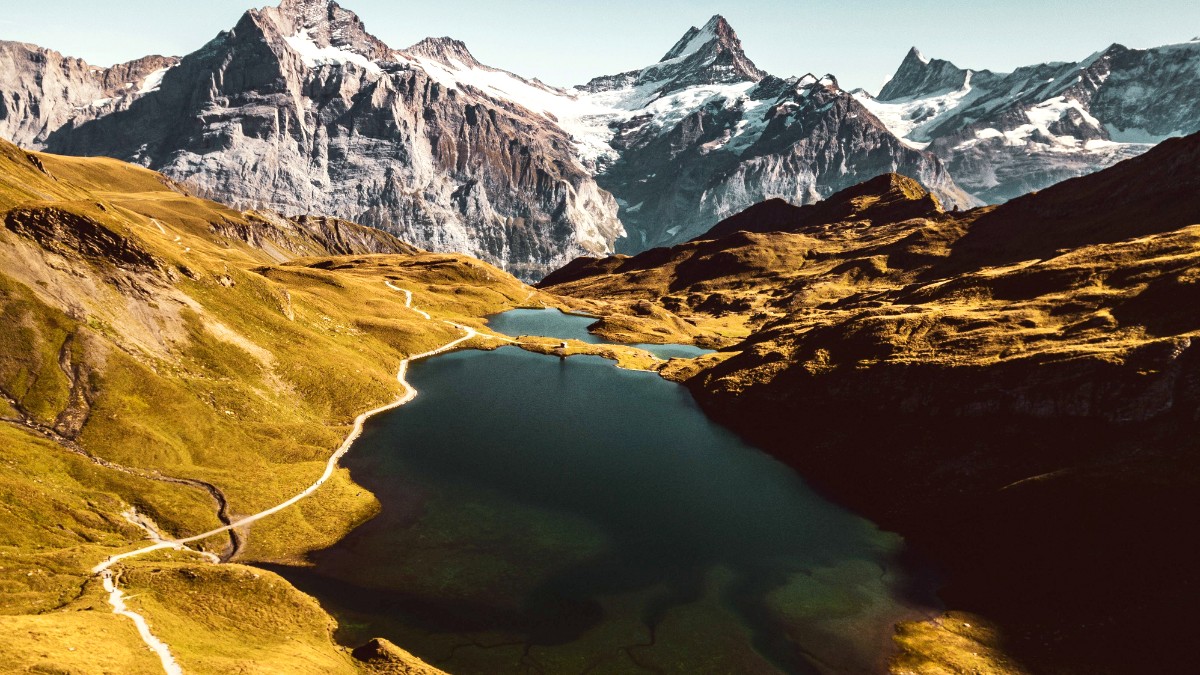
Switzerland
Swiss cuisine draws from German, French, and Italian culinary traditions, creating an unique fusion. In the Bernese Oberland, Grindelwald is located, German-speaking Swiss influences are prominent, with hearty, comforting dishes that sustained farmers and mountain dwellers through cold alpine winters.
Dairy products, especially cheese, milk, and butter, are central to Swiss cooking. This reflects Switzerland's strong agricultural heritage and its deep connection to alpine pastures and cheesemaking traditions. Many dishes incorporate local cheeses, a source of pride for the region.
Lunch from 12:00 PM to 2:00 PM. Dinner service usually from 6:00 PM and continues until 9:00 PM or 10:00 PM. Many restaurants close between lunch and dinner.
Recommended for dinner, especially in popular restaurants or during peak tourist season. This secures a table without a long wait. Wait for staff to seat you rather than choosing your own table.
Not mandatory, as a service charge is included in prices by law. Rounding up the bill to the nearest franc or adding a few francs (5-10%) for good service is a gesture of appreciation, but no obligation.
A national dish. Melted cheese (typically Gruyère and Emmental) mixed with white wine, garlic, and sometimes a splash of kirsch (cherry brandy). You eat it by dipping cubes of bread into the communal pot using long forks. Widely available in traditional Swiss restaurants.
A delightful communal experience. A half wheel of cheese heated (traditionally by an open fire or tabletop grill) and the melted cheese scraped onto boiled potatoes, pickled onions, and gherkins. Many restaurants offer it, and some have individual tabletop raclette grills.
A pan-fried potato dish, similar to a large hash brown. Often a side dish to meat or eggs, or a main course with toppings like fried egg, bacon, or cheese. Find it in most local restaurants.
A grilled sausage, often in a crusty bun with mustard. Find it at kiosks or small stands around the village. A quick and satisfying snack.
Freshly baked, soft pretzels, often with coarse salt. For a quick bite while walking around.
Many of Grindelwald's higher-end hotels (4-5 star) host fine dining restaurants. "Restaurant Gletscher" at Romantik Hotel Schweizerhof or "Restaurant Barrys" at Hotel Eiger, with refined Swiss and international cuisine.
Numerous options exist in the village center. These feature traditional Swiss, Italian, or international cuisine. Onkel Tom's Hütte (popular for pizza and pasta) and Restaurant Pizzeria Mescalero. These have a comfortable dining experience without the high price of fine dining.
Supermarkets (Coop, Migros): These have good quality ready-to-eat meals, sandwiches, salads, and groceries for self-catering. Bratwurst Stands: Find these near the train station or in popular areas, for a quick and affordable meal. Bakeries: Sell fresh pastries, bread, and coffee for a budget-friendly breakfast or snack.
Grindelwald does not have large food halls like major cities. Local supermarkets have fresh produce, cheeses, and cold cuts for picnics or self-catering.
Occasional local markets may appear during summer or special events.
Pizza and pasta are widely available and popular.
Some Chinese and Thai restaurants are present, offering variety.
Swiss restaurants are generally good about accommodating allergies. Inform staff of your dietary restrictions. The term "Glutenfrei" (gluten-free) is widely understood.
Supermarkets offer a range of gluten-free products.
Limited availability in Grindelwald. For Halal or Kosher meat, inquire directly with restaurants or self-cater from supermarkets.
Larger cities like Zurich or Geneva have more specialized options.
Indulge in the world-famous Swiss chocolate. Various bars, truffles, and pralines in shops throughout Grindelwald.
During autumn, some restaurants feature specific game dishes. Around Christmas, look for special Christmas cookies and pastries in bakeries.
Grindelwald's culinary landscape presents a delicious journey into Swiss tradition, blending hearty alpine fare with influences from neighboring European cultures.
The prominence of local dairy products, especially cheese, reflects the region's deep agricultural roots, for a genuine taste of the Alps.
Relying on supermarkets for breakfast and lunch ingredients is a smart money-saving strategy, allowing for a splurge on a memorable dinner or an unique mountain dining experience.
Check local tourist information for seasonal culinary events or farm visit opportunities.
Supermarkets (Coop, Migros) are excellent for fresh produce and ready-to-eat meals, making for budget-friendly options.
Beyond Swiss traditional food, Italian (pizza, pasta) and some Asian restaurants are available for varied tastes.
While Grindelwald village has many dining choices, consider seeking out mountain restaurants reachable by gondola or train for meals with unparalleled panoramic views.